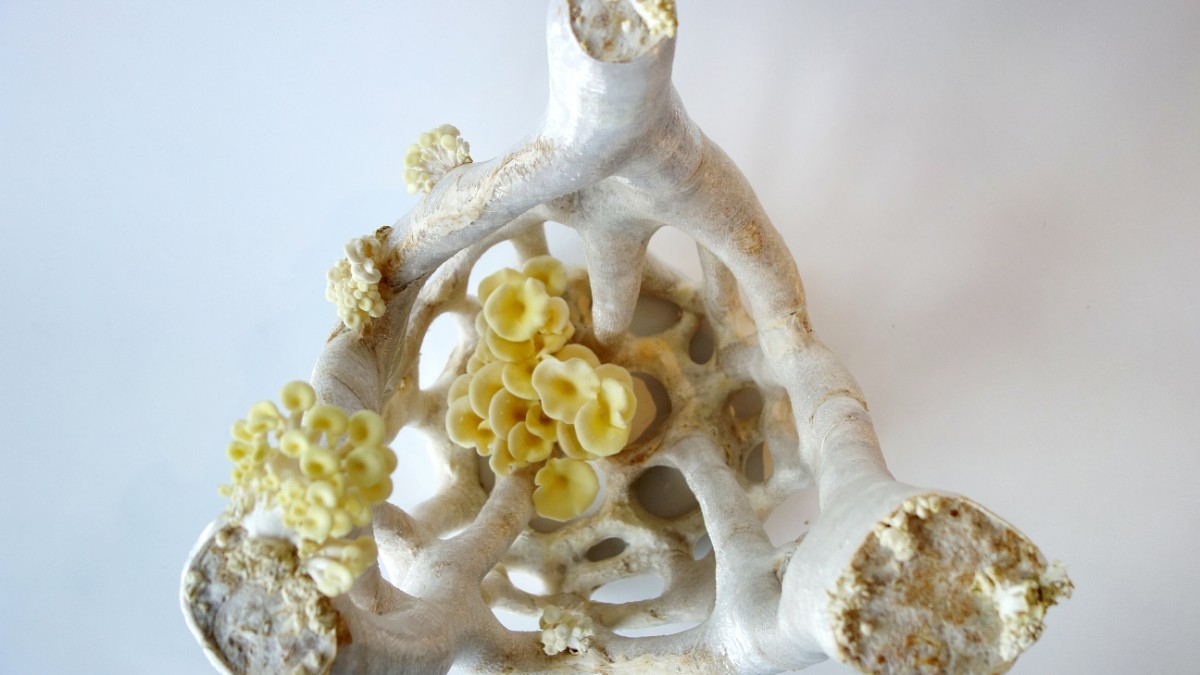Microphotograph of Ourasphaira giraldae. Image: Corentin Loron et al
Scientists have discovered fossils of a fungus that lived roughly one billion years ago—yes, billion—making it over twice as old as any other fungi specimens identified to date.Named Ourasphaira giraldae, the new species of fungus was found in the Grassy Bay Formation in the Canadian Arctic. Researchers led by Corentin Loron, a PhD student at Université de Liège, identified key fungal features in micrometer-scale fossils extracted from unexplored shale at this remote site.The discovery, announced on Wednesday in Nature, not only pushes the fossil record of fungi back by about 600 million years, it also suggests that other eukaryotic organisms—a group that includes complex multicellular life-forms like animals—may have originated around the same time as O. giraldae, in the mid-Proterozoic age.“Fungi are, in the ‘tree of life,’ the closest relative to animals,” Loron told Motherboard in an email. “This is reshaping our vision of the world because those two groups, as well as other eukaryotic groups like algae, are still present today.”“Therefore, this distant past, although very different from today, may have been much more ‘modern’ than we thought,” he said.Prior to this discovery, the oldest known fungi fossils came from the Rhynie chert, a Scottish site that dates back roughly 400 million years. Scientists have also presented possible fungi fossils predating the Cambrian explosion, a sudden proliferation of complex life that occurred 541 million years ago, but those specimens are not considered to be definitive proof of Precambrian fungi. The O. giraldae microfossils, in contrast, clearly belong to the fungus family, according to Loron and his colleagues.The team spent about a year examining the microfossils with precision-imaging techniques such as scanning electron microscopy and Raman microspectroscopy. The analysis revealed the characteristic bilayered cell structure that is associated with fungi, along with filaments capped by spheres that probably contained spores. The study also identified the oldest fossil evidence of chitin, a fibrous substance found in fungal cell walls.“No other Precambrian fossils display such morphology,” Loron said. “Thanks to these microfossils, new models can also be calculated and calibrated to refine the age of the origin of Kingdom Fungi and its different members.”This revamped timeline of fungi origins is obviously huge news for mycology nerds, but it’s also relevant to anyone interested in the emergence of complex life on Earth.Fungi play a crucial ecological role as the principal decomposers of dead matter, a process that enriches environments with the nutrients needed to sustain new generations of life. The presence of fungi on Earth one billion years ago suggests that ecosystems may have been more mature and intricate than previously assumed.“Fungi are one of the most diverse group of eukaryotes known and, despite this, their ancient fossil record is very scarce,” Loron said. He hopes that O. giraldae will prompt researchers to “discover more about these organisms that surely helped shape life on Earth as we know it today.”
The O. giraldae microfossils, in contrast, clearly belong to the fungus family, according to Loron and his colleagues.The team spent about a year examining the microfossils with precision-imaging techniques such as scanning electron microscopy and Raman microspectroscopy. The analysis revealed the characteristic bilayered cell structure that is associated with fungi, along with filaments capped by spheres that probably contained spores. The study also identified the oldest fossil evidence of chitin, a fibrous substance found in fungal cell walls.“No other Precambrian fossils display such morphology,” Loron said. “Thanks to these microfossils, new models can also be calculated and calibrated to refine the age of the origin of Kingdom Fungi and its different members.”This revamped timeline of fungi origins is obviously huge news for mycology nerds, but it’s also relevant to anyone interested in the emergence of complex life on Earth.Fungi play a crucial ecological role as the principal decomposers of dead matter, a process that enriches environments with the nutrients needed to sustain new generations of life. The presence of fungi on Earth one billion years ago suggests that ecosystems may have been more mature and intricate than previously assumed.“Fungi are one of the most diverse group of eukaryotes known and, despite this, their ancient fossil record is very scarce,” Loron said. He hopes that O. giraldae will prompt researchers to “discover more about these organisms that surely helped shape life on Earth as we know it today.”
Advertisement

